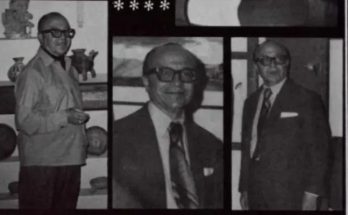By Luis Felipe Rodriguez Palacios
On the second part of this story, we talked about all the stalls at the market after 1889. The market suffered several mishaps. A gale blew off the sheet roof, and one of the beams fell on the refrigerator of the “El Pavo” butcher shop of Don Graciano Ruiz. There was also damage to other businesses at the same time. Pancho Tellez talks about another incident in 1950. He remembered it well because it was on the eve of the Virgen de la Luz celebration. He was living on Sollano Street and recalled that at midnight he overheard that the market was on fire. The fire consumed everything quickly, and there was nothing that could be done to stop it. The fire consumed the premises, as well as the eastern and southern parts of the market. It was a tragedy in which many assets were lost, although, fortunately, no one died. It was said that the Oratorian fathers actively participated in trying to fight the fire, and as soon as they became aware of it, they sounded the alarm with the bells of the oratory. They also sent their seminarians to help by removing much of the merchandise that was in danger, thus saving the assets of some merchants.
When it was learned that the market was to be demolished to make space for the current Plaza Civica, many were unhappy, but there was nothing they could do. The merchants were told that a larger and more efficient market would be built and that while the work was being done, they would be given permission to set up a temporary market on Insurgentes and Mesones. Reluctantly, some began to change their minds, and the work began. Many remained there because they had no other form of employment or the means to build a space elsewhere. The stalls were placed outside the holy house, all along Insurgentes, from Soledad to the Public Library. The butcher shops were between Loreto and Reloj, the square of Zaragoza, and Pepe Llanos and Mesones street. All along San Francisco, from Juárez to Reloj, was filled with stalls. With these improvised stands out in the open, many suffered but could not relocate to alternative rented or owned premises.
As expected, the new property was not delivered on time, and it was not better as had been promised. The Plaza Civica was inaugurated on January 21, 1969, but the merchants had to wait until September 16, 1970. The space was insufficient, and those who stayed on Insurgentes would suffer another fire at the end of the 1980s.
The original Ignacio Ramírez market was inaugurated on September 16, 1889, by the political leader Homobono González, and it was yet another work of Zeferino Gutiérrez, the architect responsible for the Parroquia façade, the dome of Las Monjas, and many other works. The original market, built in the Plaza de la Soledad, had a huge exterior colonnade made of Tuscan-style black stone. Several of these can still be admired today, but others have been moved. Inside, the columns were brick but in the same style. There was a tin roof, but it was supported by a solid structure. In the center, there was a fountain and a huge open book drawn by Lorenzo Barajas, where he portrayed Ignacio Ramírez, “el Nigromante.” There was some biographical data and some of his own verses. Later, the image of the Morenita was erected, probably on the centenary of the promulgation of the Marian dogma, in 1954.
Cornelio López Espinosa wrote that the market never looked very clean. Franco Barajas said in his book “Viñetas Sanmiguelenses,” “San Miguel de Allende is a dirty city; that is the negative side of it.” He added, “It is dirty because its residents do not have clean habits.”
Many things have changed, and many should be preserved. Each one of us should do something so we can feel that our effort was worth it. The market was destroyed by an arbitrary act of authority and the complicity of other leaders because there was a lack of solidarity. They were given a building that can never compare to the previous one. The authorities should not act willy-nilly and much less for personal interests. They should listen to the people. We must keep a critical eye and not be dazzled by glitter but rather remain aware that our heritage can be taken from us. Let us be critical enough so that the general interest prevails rather than that of the leaders who preside.
“Amicus Plato sed magis amica veritas” is a Latin phrase that translates as “Plato is my friend, but truth is a better friend.”
Xavier Rodríguez Córdova published this article for me in his magazine “Citizen Informs” Nos. 215 and 216 in March-April, 2013.




